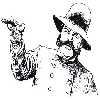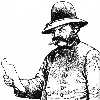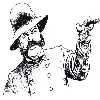
'The Art of War of Revolutionary France, 1789-1802' (Greenhill Books, London, 1998, as a companion volume to 'The Viking Art of War'.) This book looks at the way French commanders in the 1790s tried to base their methods on the classical practice of the Seven Years War, but found that without sound money, sound logistics or trained soldiers, they were forced to cut quite a few corners. They could not fight in open terrain, and they had to live by a cruel system of ever-expanding pillage and conscription. There was therefore a degeneration in the art of war, rather than a 'Military Revolution', and most of the battles ended in either indecisive draws or ignominious routs. Yet through sheer persistence and the disunity of her opponents France did nevertheless manage to win most of her campaigns by the end of 1794, to become 'the most powerful state the world had ever seen'. That was before either the army had been reformed or General Bonaparte had risen to prominence. When that officer did come to rule the roost in the 1800s he still tried to use the methods of the Old Regime - and by that time with the great advantages that the soldiers were veterans and the army had been reorganised. But with no reform in the economy or the logistics, he was doomed to remain imprisoned within the same constraints as the Revolution, and disaster was ultimately unavoidable.







